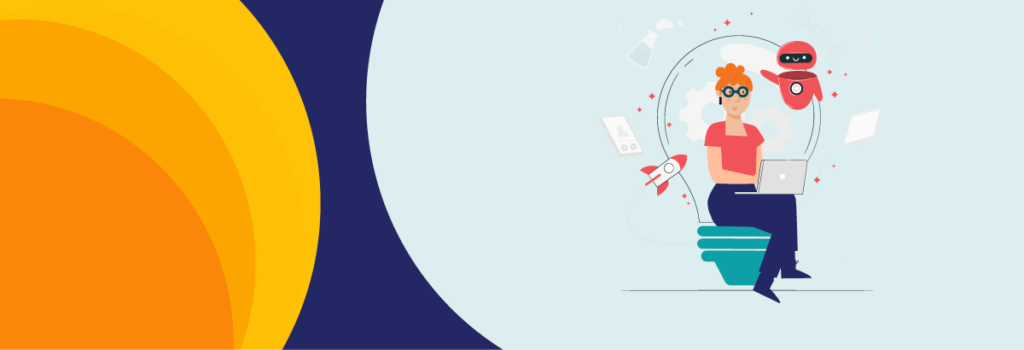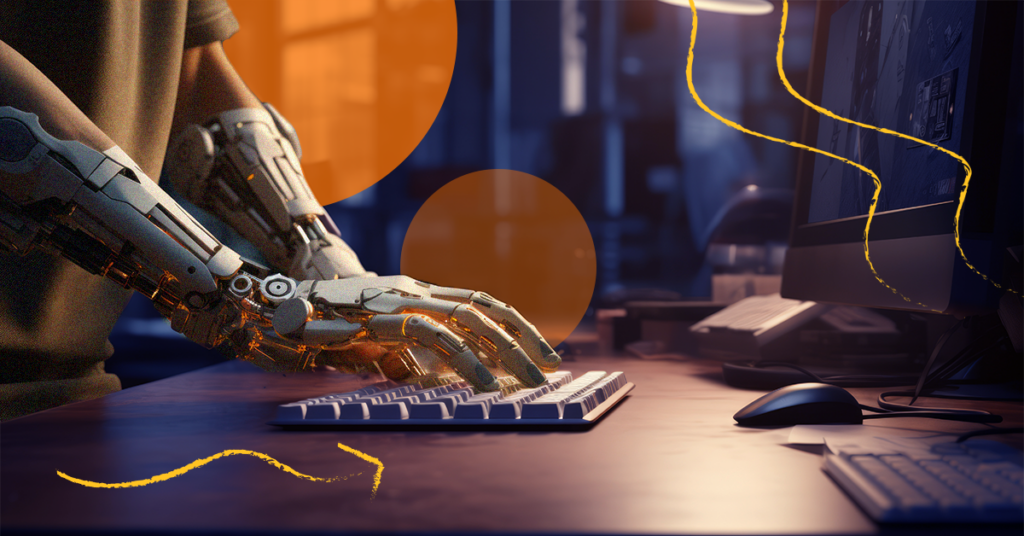As most folks in the Atlassian community know, Team ‘24 in Las Vegas has wrapped. The Trundl booth was bumping, and we had a blast! Lots went on, but of course, the big announcement was Rovo, a generative AI offering designed to help enterprises “make better decisions and reach their goals faster.” I can’t wait to test drive it.
Despite Ted Lasso actor Jason Sudekis being in attendance, AI was the true star of the show. Everywhere, the conversation turned to generative AI and the sentiments were identical: AI is the future of technology. However, gentle follow up questions were met with either blank stares or chuckles and shrugs of “I don’t know, it’s in everything now” and “everyone’s doing it.” Hmmm.
I may have been susceptible to peer pressure in high school, but not this time! I’m an Old Millennial who remembers too much. The implosions of the metaverse, cryptocurrency, and NFTs are still fresh. What’s clear is that without humans, generative AI cannot move forward in a meaningful way, and working alongside AI will be the biggest challenge and opportunity in the years to come Atlassian’s got the toes in the water. Grab a coffee and let’s get into it.
Let’s look at AI and TEAM ‘24:
Atlassian Intelligence has moved out of Beta, and offers ~30 new capabilities geared around making insights accessible, and tools to make data-driven decisions faster. Virtual agents can field questions, scan your knowledge base, and respond with cogent answers. Some previously complex tasks are now for the layman, with the use of natural language to write JQL or take actions. You can even use AI for various configuration setups (ie. Service desk).
Atlassian Rovo was announced as well. It is built on what Atlassian calls the “teamwork graph”, utilizing AI to pull data from Atlassian tools and SaaS apps aid enterprise search and knowledge discovery.
The Cautionary Tale on all AI
Generative AI brings fundamental trust and safety issues regarding the output. There are plenty of stories of companies that over-rely on it or use it without fully understanding it as a product.AI can hallucinate and make up non-existent software packages, and the results can range from incorrect to ethically and legally compromising. In most industries, a product that users can’t reliably trust won’t last.
Atlassian admins will need to understand what pool of knowledge Atlassian AI is pulling from, the likely recipients of the outputs, and what risks exist for worst case scenarios. Atlassian itself hedges against this in their posted Responsible Technology Principles. Note the progress over perfection clause and note that the challenge of AI is a collective one.
Atlassian is not alone. All SaaS providers are adding AI features. Additionally, you don’t want to be a company without an AI plan or posture for fear of looking unprepared for what’s next. Well, what IS next?
On one of the skyscrapers under construction near where I live, there’s a sign that says “Hey ChatGPT… finish this building” and underneath is the construction company’s job postings URL. There’s a more grounded approach we need to take to how AI is going to practically help us be better at whatever we do, and to reject it where it can’t.
It has been a long time since the world has seen truly meaningful innovations. Apple is a great example. Despite being the most valuable company for a decade and overflowing with cash for R&D, nothing has truly supplanted the iPhone (released 17 years ago). Is this the gamechanger we’ve been waiting for? It’s 2024 and instead of technology to wash and fold our clothes for us, we have teens addicted to TikTok and zombie scrolling adults. But let’s not go there!
There is so much global investment in Generative AI, but it faces an uphill battle with regards to expensive operating costs, a barrage of lawsuits (including the feds), semiconductor chips that don’t exist yet, and it’s quickly running out of data to parse. No one wants AI to be a plagiarism machine that scrapes the internet for human written content to consume and regurgitate, but that’s what we’ve got… today.
Work alongside AI but know what’s under the hood

Despite the questions and doubts, we know the most successful workers in the future will be ones who will work alongside AI. It is an answer to what makes modern work hard… our brains aren’t built for data (and possibilities) out there.
Atlassian Intelligence is a tool to help handle some of the more stressful parts of a knowledge worker’s job… finding information, summarizing complex data points, and driving decision making. Atlassian Intelligence features address practical pain points and are worth taking advantage of, particularly in organizations with good administration practices.
Need to see these in use? The Atlassian University courses are all now free, so we’d suggest the Work more effectively with Atlassian Intelligence courses, or you can connect with an Atlassian Solution Partner, like Trundl.
Great collaboration is still human
Outside of Atlassian, Generative AI is still underdeveloped and has yet to prove its efficacy beyond novel synthetic creations. As the world races to bake this new technology into existing platforms and products we use every day, it’s worth a step back to interrogate the hype and separate real value from face value.
As I see it, the recent influx of AI has illuminated the value of human generated content and ideas. It’s a vivid reminder that humans filter their words and work through the lens of their lived experiences, connections, and imagination. In a lot of ways, the way we work is no exception.
So, what do you think of generative AI thus far? Has it changed your life or work? Do you think we’ll all be replaced by AI robots anytime soon?


